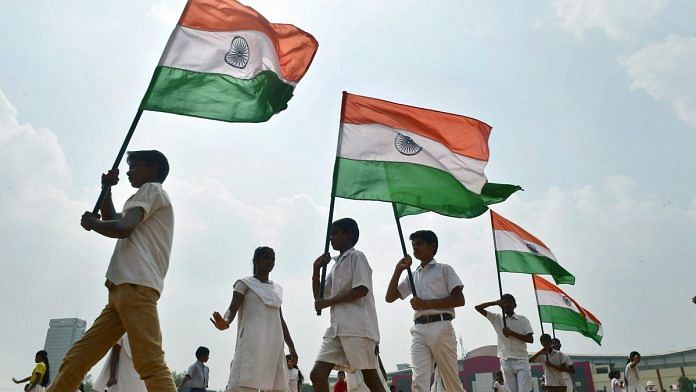
Thank you dear subscribers, we are overwhelmed with your response.
Your Turn is a unique section from ThePrint featuring points of view from its subscribers. If you are a subscriber, have a point of view, please send it to us. If not, do subscribe here: https://theprint.in/subscribe/
Examination of the history of the previous three centuries and the current structure of the world system leads us to the distinction of countries into two groups: colonizers and colonized. The effect of colonization has left a mental imprint on the population of entire civilizations. It has made them perceive the world through this lens of the ruler and the ruled. Many third world countries still look to replicate the “successful” western way of life and arguably, this is an effect of the colonial process. The process of decolonization resulted in the birth of many new nation-states which did not necessarily accept the Westphalian concept of national identity and had traditionally followed local identities of Biradri or caste-based identity. Violent encounters almost always followed the process of decolonization in the new nation-states as different identities and groups vied with each other for rights and privileges. This paper will look to study this phenomenon in the Indian freedom struggle as captured in the novel Freedom at Midnight, by Dominique Lapierre and Larry Collins.
The freedom struggle of India was a long drawn out and traumatizing process which resulted in the birth of two nations (later three) which are till date engaged in a vicious cycle of violence and terror. The success of the decolonization struggle in India is majorly attributed to the Indian National Congress and Mahatma Gandhi, who led countless peaceful satyagraha and marches, which ultimately brought the English to their knees. However, a part of history that is conveniently left out is the contribution of many more extreme methods like those employed by Netaji Subash Chandra Bose, who led the Indian National Army in World War II against British Indian forces in the region of Burma and the North East of the country. Such leaders who did not conform to the more mainstream and Westphalian ideals of Nehru and Gandhi, are given scarce recognition for their efforts and the value of their actions undermined in the Freedom movement.
This phenomenon is not limited to just India but also the freedom struggle of Malaysia where the Chin Peng was omitted from history because his vision of a free Malaya threatened the vision of the future world order of the colonial authorities. One of the most famous examples of this is the case of the freedom fighter Shaheed Bhagat Singh. He was involved and sentenced to death in an attack on an English judge whom he perceived to be deaf to the rights of the native Indian. People appealed to Gandhi to get clemency for him, but he refused. There comes to mind the perspective that Gandhi detested violent methods of struggle and regarded them as an undesirable method of protesting. Gandhi arguably could purposefully let Shaheed Bhagat Singh hang to eliminate the memory of any other potential champion of decolonization other than the ones he deemed worthy, who could otherwise have taken the Indian freedom struggle down a different path to completion.
The other distinctive feature of the decolonization process is that it is essentially a violent process (Fanon 37). It is a process which seeks to do away with the status quo and destroy the oppressive structure in which outsider rule over the indigenous, barbaric and uncultured natives. These natives exist because of the arrival of the colonizers, and their identity linked to that of each other. Frantz Fanon mentions in his book The Wretched of the Earth that the native town is a town of hunger, filth and diseases stick natives. The colonial abodes, on the other hand, is a town of plenty, joy and the more beautiful things in life. The colonizer is right to fear the native because the native watches them with envious and lustful eyes. The only method that would enable the native to do that would be a violent struggle against the outsider, and hence it is only but natural that the process of decolonization was the way recorded in history.
The decolonization of India was a process fraught with struggles and adversity, but all the same, it was a process very similar to the experience of other colonies. The historical description of various events and movements and the subsequent value judgements added to them reveal an ignorance of the true nature behind the process of decolonization. Western authors and scholars would find it difficult to understand how events such as the partition or even the Chauri-Chaura incident turned violent simply because they are a legacy of the colonizer history and not that of the colonized. Their disregard for leaders like Subhash Chandra Bose and other radical revolutionaries reveals a deep-seated self-interest in projecting the militaristic superiority of the colonial authority. Their generous portraits and descriptions of the personalities and actions taken by Westphalian leaders like Jawaharlal Nehru and Mohamad Jinnah is natural given their desire to protect the strategic ideological and philosophical basis for their history and worldview.
Bibliography
- Aljunied, Syed Muhd Khairudin. “The Prison and the Anti-Colonialist in British Malaya.” Journal of Historical Sociology, vol. 25, no. 3, 2012, pp. 386–412., doi:10.1111/j.1467-6443.2011.01420.x.
- Collins, Larry, and Dominique Lapierre. Freedom at Midnight. Vikas, 2019.
- Elkins, Caroline. Imperial Reckoning: the Untold Story of Britains Gulag in Kenya. CNIB, 2008.
- Fanon, Frantz, et al. The Wretched of the Earth. Kwela Books, 2017.
- Stockwell, A. J. “Chin Peng and the Struggle for Malaya.” Journal of the Royal Asiatic Society, vol. 16, no. 3, 2006, pp. 279–297., doi:10.1017/s1356186306006201.
These pieces are being published as they have been received – they have not been edited/fact-checked by ThePrint.

COMMENTS